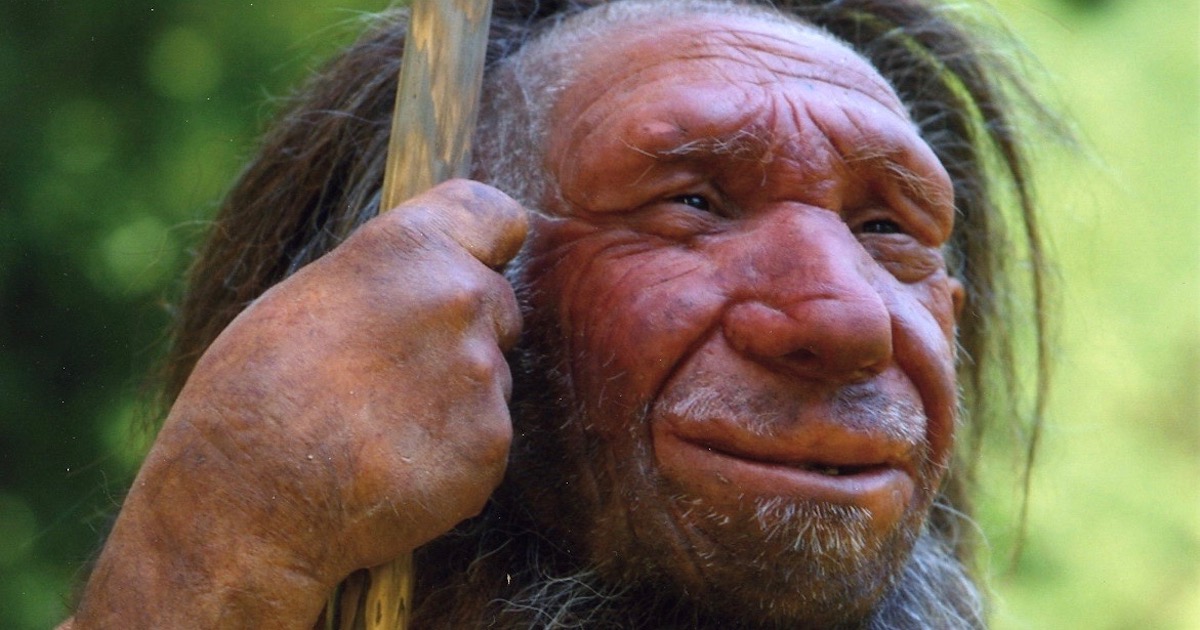 Evolution
Evolution
 Human Origins
Human Origins
Were Neanderthals and Humans the Same Species?

As I noted yesterday, the evidence for small-brained Homo naledi using fire is being rejected by the paleoanthropological community. But it is widely accepted that the very human-like Neanderthals did use fire — and this view has been further supported by a newly published paper in PLOS ONE. It describes evidence of fire use by Neanderthals in the Gruta da Oliveira cave in Portugal:
In the excavated areas, conditions for residential use were optimal during the accumulation of layers 20–22 (c. 90,000–92,000 years ago) and 14 (c. 76,000–78,000 years ago), which yielded dense, hearth-focused scatters of stone tools and burnt bones. The latter are ubiquitous, adding to the growing body of evidence that Middle Palaeolithic Neandertals used fire in regular, consistent manner. … As demonstrated by the ubiquitous presence of wood charcoal and burnt bone, fire was used throughout, leaving traces whose variation (from microscopic lumps of burnt sediment to in situ hearth features) relates to issues of situation (position of the excavation trench relative to activity areas that were spatially heterogeneous) and preservation (differential impact of post-depositional dynamics), rather than to issues of availability or production. When compared with the regional Upper Palaeolithic record from 50,000 years later, e.g., the evidence from Gruta do Caldeirão, the patterns of cave usage by the Middle Palaeolithic Neandertals who took shelter at Gruta da Oliveira are essentially the same.
Going back to the recent paper in the Journal of Human Evolution which rejected evidence of culture from Homo naledi, one of the co-authors of that paper also published a paper last year in Quaternary International titled “The origin of the Homo sapiens lineage: When and where?” which contained a nice review of those who believe modern humans and Neanderthals were the same species:
Genetic evidence suggests that we share a last common ancestor (LCA) with Neanderthals (Homo neanderthalensis), who may have lived between 550 and 765 ka ago (Meyer et al., 2016) or perhaps earlier (Green et al., 2010; Reich et al., 2010). In addition, evidence from the fossil record has long suggested that the earliest modern-like human anatomy is found in Africa. However, we are less certain about the time and place of origin of the LCA. In fact, after the genetic and geographical divergence of the LCA there is an indeterminate time in which populations are not yet anatomically modern and are therefore not included in H. sapiens. Stringer (2016) calls this stretch of evolution the sapiens lineage. Some authors have included these populations in chronospecies of H. sapiens (e.g., H. helmei). Similarly, populations of the “neanderthalensis lineage” have been included in the chronospecies H. heidelbergensis. For some authors, the origin of the LCA is necessarily located in Africa as well, but for others there is still a lack of data to be certain about where, when and how the sapiens lineage arose.
A few things are worth highlighting there. First, the authors point out the overall lack of evidence for exactly “where, when and how the sapiens lineage arose.” Indeed, the evidence for exactly how our species evolved is quite unknown.
But more on point, they say, “Some authors have included these populations in chronospecies of H. sapiens.” What they mean is that some believe that modern humans and Neanderthals were all part of the same interbreeding population over time. We were essentially one.
“Different Human Forms”
This view challenges conventional wisdom about Neanderthals. It holds that we are basically just different subgroups of the same species, Homo sapiens. The authors of the paper about the Gruta da Oliveira cave certainly seem open to this view, as they are quoted in a recent Science Alert article titled “Neanderthals Might Not Be The Separate Species We Always Thought”:
“More than different species, I would speak of different human forms,” says University of Trento archaeologist Diego Angelucci, the lead author of a recent study summarizing decades of research on what was home to families of Neanderthal more than 71,000 years ago.
The news article notes the stereotype about Neanderthals; they were “assumed to be an intellectual dunce compared with modern humans.” However, “As discoveries mounted and analytical tools improved, our impressions of the Neanderthal gradually shifted.” The story continues:
Gone is the archaic stoop and animalistic grunting. Today our ‘primitive’ relatives appear to have intentionally buried their dead, made jewelry, and may even have created art.
Evidence that they carefully used fire in their technology only further builds a case that Neanderthal culture was far from simple, and far more akin to our own.
“There is a general agreement among archaeologists that they knew how to use fire,” says Angelucci.
“However, one thing is to use fire started by natural processes, such as lightning, another is to make it, feed it with wood and use it for cooking, heating and defense.”
Just how they might have started fires isn’t yet clear, though Angelucci speculates it might not have been all that different to other Neolithic practices, such as the flint and tinder method used by Ötzi, the Iceman.
With genetic analysis confirming Neanderthals frequently interbred with our own ancestors multiple times through history, the case for them being a separate species weakens only further.
Whatever our ultimate relationship with Neanderthals turns out to be, a strong argument can be made from genetics, morphology (body structure), and archaeology that humans and Neanderthals are essentially the same species. I don’t hold that view dogmatically, as the nature of Neanderthal culture is still hotly debated. What I think is clear is that common stereotypes about Neanderthals are wrong. The evidence does not demonstrate that humans evolved from some kind of humanlike yet intellectually primitive precursor.
